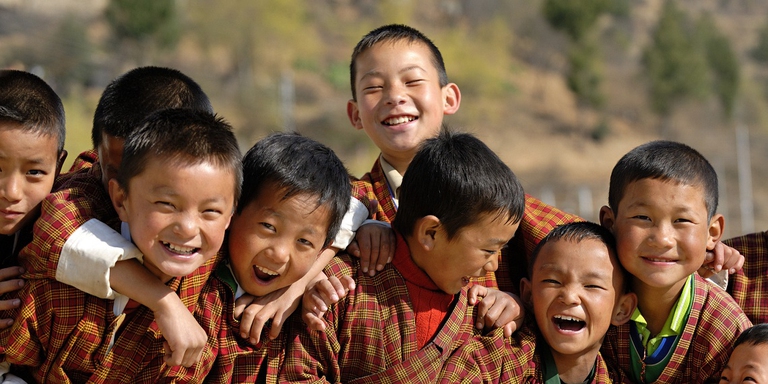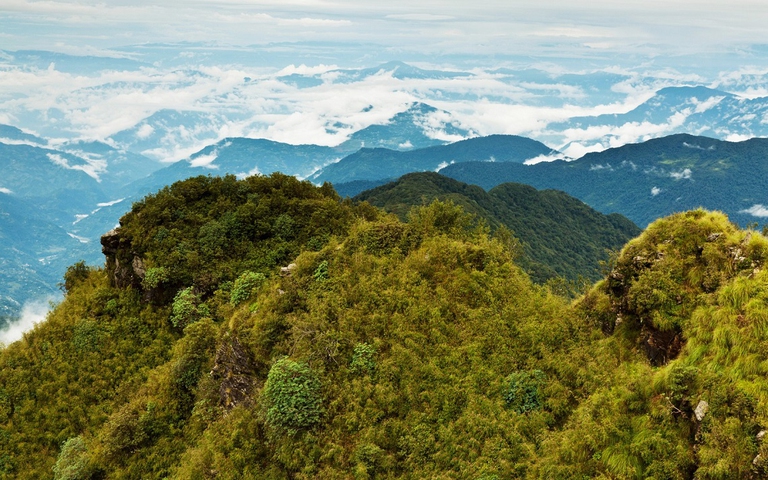
The Amazon became an alternative classroom during the pandemic. Now, the educational forest in Batraja, Bolivia, lives on to teach children and adults the value of nature.
Secondo un nuovo studio il Bhutan, grazie alle capacità di assorbimento delle proprie foreste, è il paese che produce meno CO2 al mondo.
Bhutan, a small Asian country located high in the Himalayas, reminds us of the GNH (Gross National Happiness), an index coined in the 1970’s by King Jigme Singye Wangchuck, which substituted the GDP (Gross Domestic Product). Inhabitants live in symbiosis with the environment, as the country has established that forests must cover at least 60 per cent of the country and has banned tree cutting and animal hunting.
This miracolous balance could be jeopardised by climate change, which is posing significant threats to glaciers. Ice retreat could in fact deprive millions of people of drinking water and put Asian food security at risk by 2050.
Bhutan, in occasion of the Paris Climate Conference (COP21), undertook the most ambitious goal of CO2 emissions reduction among the participating countries. Almost three fourths of the country is covered by forests, but the government has pledged to further reforest the area. Last year, Bhutan set a record for the highest number of trees planted in an hour: nearly 50,000.
According to data provided by the Carbon Comparator, a tool developed by the Energy and Climate Intelligence Unit (ECIU), Bhutan’s capacity of cutting emissions has no equal. Indeed, Bhutan absorbs three times more CO2 emissions than it produces (note that some area of the country lack access to the electricity grid).
“As a small state high in the Himalayas, Bhutan faces disruption to water supplies, extreme weather and impacts on ecosystems as a result of changes to the climate,” said Richard Black, ECIU Director. “So it is in their interests to address the problem both domestically and through the UN climate process.”
Alongside the great importance given to forests, Bhutan is trying to fight the regional increase in cars, through heavy automobile taxes, public transit systems and greater use of electric vehicles.
“People are already noticing the temperature changes,” said Thinley Namgyel, the country’s chief negotiator at COP21 in Paris. “High mountains which should be closed for months are now open year-round. Monsoon rains are not arriving on time, and then appearing when we don’t need them, destroying crops. We see a huge potential disaster developing from the mountain glaciers, which are retreating.”
Siamo anche su WhatsApp. Segui il canale ufficiale LifeGate per restare aggiornata, aggiornato sulle ultime notizie e sulle nostre attività.
![]()
Quest'opera è distribuita con Licenza Creative Commons Attribuzione - Non commerciale - Non opere derivate 4.0 Internazionale.
The Amazon became an alternative classroom during the pandemic. Now, the educational forest in Batraja, Bolivia, lives on to teach children and adults the value of nature.
Our species took its first steps in a world covered in trees. Today, forests offer us sustenance, shelter, and clean the air that we breathe.
Bangladesh suffered widespread damage as a result of Cyclone Amphan. Yet the Sundarbans mangrove forest acted as a natural barrier protecting the country from further destruction, as it has done countless times before.
On top of a 2.4 million dollar compensation, the indigenous Ashaninka people will receive an official apology from the companies who deforested their lands in the 1980s.
The tapir was reintroduced into Brazil’s Atlantic Forest, the country’s most at-risk ecosystem. The species can play a key role in the forest’s recovery.
Forests are home to 80 per cent of the world’s terrestrial biodiversity. This year’s International Day of Forests highlights the urgent changes needed to save them.
After a legal battle that lasted two years, Indonesia’s Supreme Court has revoked the permit to mine for coal in the forests of South Kalimantan in Borneo.
The 26th edition of the United Nations Climate Change Conference, COP26, will be held in Glasgow, Scotland in November 2020. The pre-COP will take place in Milan, Italy.
The list of human and animal victims of the Australia wildfires keeps growing – one species might already have gone extinct – as the smoke even reaches South America.









